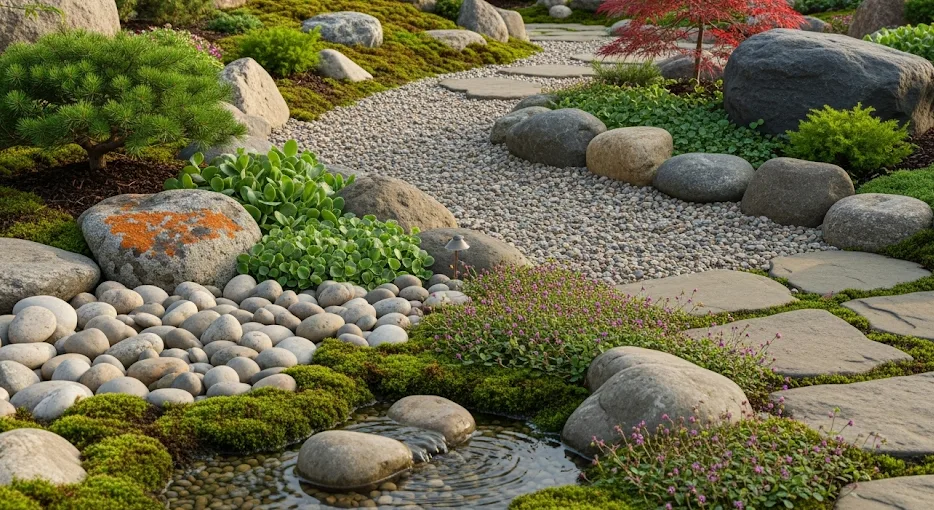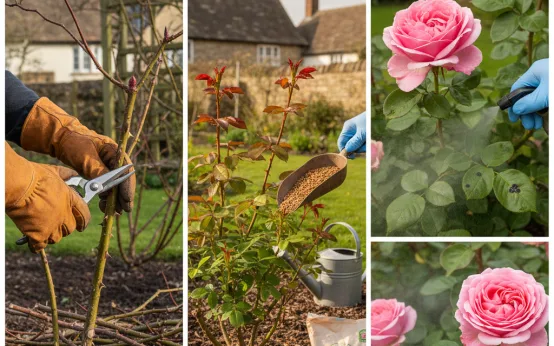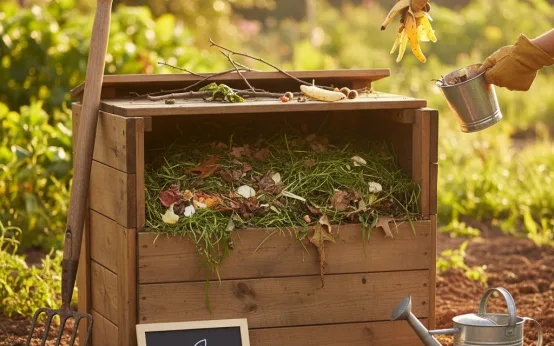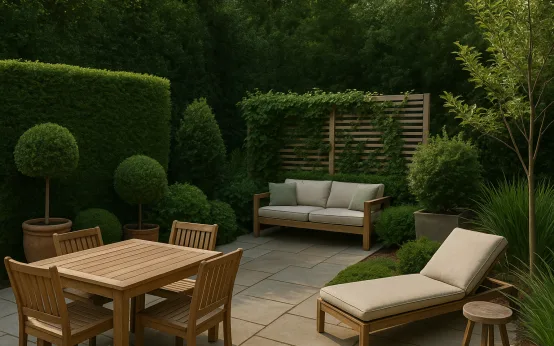
Rock gardens bring a unique character to outdoor spaces, combining the raw beauty of stone with carefully chosen plants that thrive in challenging conditions. Popular across the UK for their resilience and charm, rock gardens can transform even small or sloped areas into striking landscapes. They are low-maintenance, long-lasting, and versatile, fitting equally well into cottage-style gardens or contemporary designs. With thoughtful planning, you can create a rock garden that looks natural, enhances biodiversity, and provides year-round interest.
Why Rock Gardens Stand Out
Unlike traditional flower beds, rock gardens are defined by texture and structure as much as by colour. Stones and boulders act as anchors, shaping the layout and giving the space a sense of permanence. Between them, hardy plants establish themselves in crevices and shallow soil, echoing the conditions of alpine landscapes.
One of the main appeals of rock gardens is their adaptability. They are ideal for sloped or awkward areas where regular planting struggles. By arranging rocks and gravel to prevent erosion, you create a stable environment where drought-tolerant plants can thrive. In urban gardens, rock gardens add sculptural beauty, requiring less watering and care than lawns or traditional borders. Their resilience also makes them well suited to the unpredictable British climate, where periods of heavy rain can be followed by dry spells.
Rock gardens also provide ecological value. They attract pollinators with nectar-rich plants, while the gaps between stones offer shelter for insects, amphibians, and small mammals. In this way, they contribute to biodiversity while maintaining a distinctive, low-maintenance aesthetic.
Choosing Plants for Rock Gardens
Plant selection is critical to the success of a rock garden. The best options are those that can cope with shallow soil, good drainage, and periods of drought. They tend to be compact, hardy, and long-flowering, ensuring interest across the seasons. Some of the most reliable choices for UK gardens include:
- Sedum (Stonecrop): Low-growing succulents with fleshy leaves and clusters of flowers that attract bees.
- Aubrieta: A spring bloomer with purple flowers that spill beautifully over rocks.
- Thyme: A fragrant herb that doubles as ground cover, thriving in sunny spots.
- Saxifraga: Known for its rosettes of leaves and delicate star-like flowers.
- Sempervivum (Houseleeks): Succulents that form tight rosettes, ideal for filling gaps between stones.
These plants not only tolerate poor soil but also create striking contrasts against the rough texture of rocks. By mixing evergreen foliage with seasonal flowers, you ensure year-round appeal. For example, sempervivum provides structure throughout winter, while aubrieta adds colour in spring, and sedum flowers carry the display into late summer.
Designing for Impact
A well-designed rock garden looks natural, as though the stones and plants belong together. To achieve this, placement of rocks is crucial. Large stones should be partially buried to appear as though they are emerging from the soil rather than sitting on top. Grouping rocks in irregular patterns mimics the randomness of nature, while pathways of gravel or stepping stones add accessibility and rhythm.
When it comes to planting, variety in height and texture creates depth. Tall grasses or alpine shrubs can provide backdrop structure, while creeping ground covers soften edges and fill empty spaces. Colour should be considered too: silver-leaved plants such as artemisia or lamb’s ear reflect light, adding brightness, while purple and yellow flowers bring vibrancy against neutral stone.
Water management is another design factor. Because rock gardens drain quickly, they are less prone to waterlogging, but slopes may require terracing to prevent soil erosion. Incorporating gravel mulch around plants retains moisture, suppresses weeds, and enhances the clean look of the garden.
Lighting can further highlight the design. Subtle spotlights on boulders or low-level lights along paths emphasise textures and extend enjoyment into the evening. Rock gardens work particularly well in front gardens, where they offer kerb appeal, or in smaller spaces where their sculptural presence makes a big impact without demanding constant upkeep.
A Garden of Texture and Resilience
A rock garden is more than a practical solution for tricky areas; it is an artistic expression that celebrates texture, form, and resilience. By combining durable materials with hardy plants, you create a landscape that thrives where others might fail. It is a garden style that adapts to the changing UK climate, offering colour in spring, greenery in winter, and interest at every stage in between.
The beauty of rock gardens lies in their permanence. Once established, they require little intervention, leaving you free to enjoy the shifting interplay of stone and foliage. They bring structure to flat plots, character to slopes, and low-maintenance charm to courtyards. Most importantly, they prove that gardens do not have to rely on expansive lawns or ornate borders to feel complete. A well-designed rock garden, filled with carefully chosen plants, can transform any outdoor space into a striking and enduring retreat.

 Rose Garden Care: Pruning, Fertilizing, and Disease Prevention
Rose Garden Care: Pruning, Fertilizing, and Disease Prevention  How to Start Composting: A Beginner’s Guide
How to Start Composting: A Beginner’s Guide  Creating Outdoor Room Divisions with Plants
Creating Outdoor Room Divisions with Plants